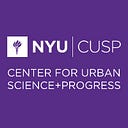Buses For The Win
Mexico City has a bus rapid-transit system (BRT) that uses dedicated bus lanes and stations/platforms to deliver mass transit, with up to 500 million passengers annually. It has reduced commute times by 33% and CO2 emissions by 35,000 metric tonnes annually. The system is designed to deliver service quality at levels like subways, at 5% the per kilometer cost. There are three distinct aspects of the system to consider:
· Stations: Passengers pay prior to entering a secure station which improves safety and reduces boarding time
· Reliability/Efficiency: Quick boarding times reduce “bunching” and buses arrive every ~45 seconds with dwell times of 10–15 seconds
· Equity: Lines can be implemented in low-income/density areas, serving communities where subways are cost prohibitive
Buses in North America typically operate in regular traffic which reduces reliability and service quality, creating a negative perception among citizens and policymakers. However, buses are an important part of a multi-modal transportation system. Buses have advantages over subways such flexible service level and lower capital cost. Building a BRT system mitigates the negative features of bus service, while preserving the positive qualities.
BRT systems are a lower cost, equitable, scalable, and flexible method of delivering transit services. Creating a BRT style system in North American cities should be seriously considered by policymakers.
https://sustainabledevelopment.un.org/index.php?page=view&type=99&nr=49&menu=1449

